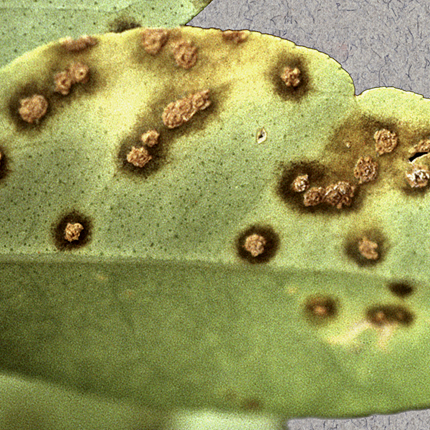
Exercise 12
Exercise # 12
BACTERIAL DISEASES IN PLANTS
Bacteria are unicellular prokaryotes. They are microscopic microorganisms generally ranging from 1-2 µm in size. They may be epiphytes as well as endophytes. Bacteria reproduce sexually as well as asexually. Fission and binary fission are common asexual reproduction processes while transformation, transduction and conjugation are sex like processes for reproduction. Bacteria causeblight, dieback, leaf spot, crown gall, canker and wilt diseases in plants.
Materials
Diseased samples of above mentioned diseases.
Procedure
- Visit the nearby fields and collect diseased samples.
- Observe the above mentioned symptoms in detail.
- Prepare nutrient agar (NA) medium.
- Cut the infected samples into small sections and place them on NA medium in petri-dishes after surface sterlization.
- Prepare pure culture of different bacteria and note the colour and size of colony.
- Perform the Gram’s staining reaction for the identification of gram-positive and gram-negative types
Questions
- What are the names of stains used in Gram’s staining reaction?
Crystal Violet
Iodine solution
- Whatare gram-positive and gram-negative bacteria?
Gram positive bacteria retain crystal-violet stain while gram-negative bacteria do not have affinity with stain combination.
- What is the recipe of NA?
It is nutrient agar medium used to culture (grow) bacteria artificially.


